Ganesha as Primal Sound
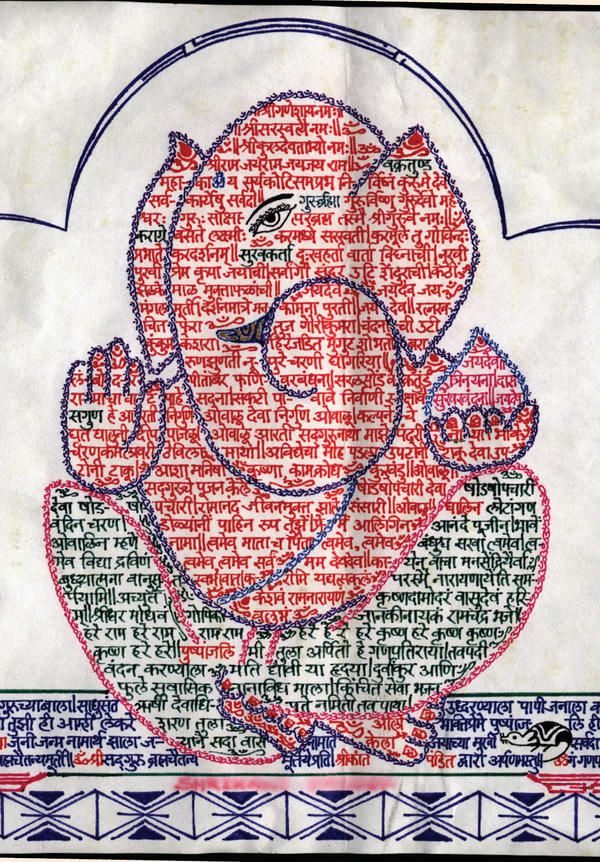
HYMNS OF THE VEDAS EXTOL GANAPATI, THE LORD of the Ganas, attendants of Siva. The most famous verse to Ganapati is from the great hymn Sri Rudram found in the Yajur Veda Samhita (and Rig Veda 2.23.1).
Gananam tva ganapating havamahe
[traditionally chanted ganapati gm]
kavinkavinam upamashravastamam,
jyeshtharajam brahmanam brahmanaspata
a nah shrinvan nutibhih sida sadanam
The Deity who is hailed as the chief of the celestial hosts (Ganapati) here is called Brahmanaspati. However, the descriptive epithets applied to Him are apposite as well to the elephant-faced God as Kavinkavinam, the Seer of seers, Ganapati being the God of wisdom par excellence, and Jyeshtharajam, the Vinayaka commanding precedence over others.
Ganesha Pancharatna
In the Ganesha Pancharatna by Shri Shri Shri Adi Sankara is found the line: kaladharavatamsakam, “He who dons the crescent,” which attribute is also applied to Siva. The Vedas assign Him a special place amongst the Gods. He was propitiated to bestow success and enjoyment and to avert obstacles and calamities. Various prayers to Ganesha are recorded in the Vedic texts. He is invoked as the Law of laws, the Seer of seers and the Principal of principals in the verse above, as translated below:
O Ganapati, the Seer of seers, unrivalled in wealth, King of elders, Principal of principals. Hear us and take Thy place, bringing with Thee all enjoyments.
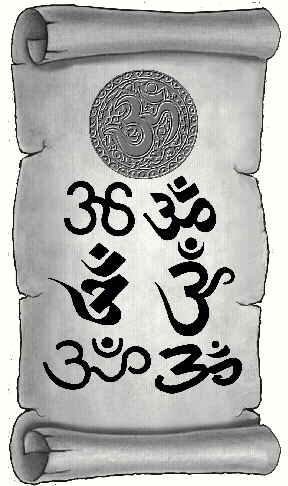
Shatapatha Brahmana
In Shatapatha Brahmana 10.4.56, the Son of God, “a second myself,” dvitiya atma, is spoken of as mithuna: the “word not spoken.” God’s unspoken word is internal and unmanifest. Ganesha thus came to be recognized as the “God Word.” The Son is the testimony of the immanence of God being generated eternally. Ganesha reflects the wisdom of His Father and is the repository of the word of God Siva.
Taittiriya Aranyaka
In the Taittiriya Aranyaka is a clear reference to Ganapati as Dantim (tusker). This word occurs in the Gayatri sacred to Ganapati:
Tanno dantih pracodayat.
Let that Tusker illumine our thoughts.
Significance of Aum / Om / ॐ
The word ॐ – “Aum” also spelled as “Om” is considered a sacred sound and a symbol with deep spiritual significance, and the resonance of Aum is heard everywhere. Aum Tat Sat. So declare the Vedagamas.
That word is Aum / Om / ॐ.
This syllable is the imperishable spirit,
This indeed is the highest end.
Knowing this syllable, truly indeed,
Whatsoever one desires will be his….
That is the Supreme Support,
Knowing that support,
One becomes happy in the Brahma world.
Katha Upanishad 2.15-16
This audible symbol Aum serves as a support of contemplation. One infers the unseen in the seen, the unheard in the heard.
Dr. Ananda Coomaraswamy
We sing in praise of Him
Who is the essence of Omkaram.
Satguru Yogaswami’s Natchintanai
The Causal Word, Aum, represents the divine thought, the source of existence. It corresponds to the power of will, known as Siva Intention, or icchha shakti. The power of knowledge known as Vishnu Formulation, or jnana shakti, and the power of action known as Brahma Expression, or kriya shakti, also express the Causal Word, Aum.
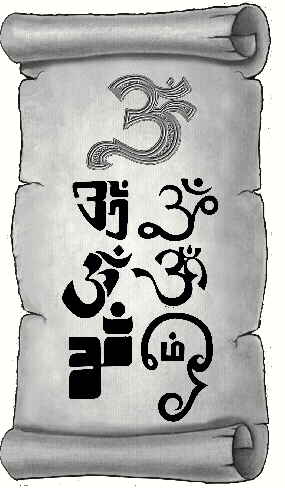
Omkara signifies the Supreme Siva, being both vyashti (individual) and samashti (cosmic). Thus, Ganesha Aum, the divine son of Siva, is the support of the whole universe. His sound-symbol Aum is indestructible in past, present and future. It is immortal and ageless. He is ever Pillaiyar, the cherished child of Uma-Parameshvara. By meditating on Him in the three aspects of A-U-M, devotees can realize the reality of the Godhead. The mahavakya Aum Tat Sat implies “That is what it is,” and it is transmuted into the form of Ganesha. He embodies the Truth of Tat Tvam Asi, “Thou art That.”
Everything that our mind can grasp can be expressed in terms of kind, or category. So, category is a fundamental element of existence. All that can be counted or comprehended is a category (gana). The principle of classifications through which the relations can be understood between different orders of things, between the macrocosm and the microcosm, is called the Lord of Categories. He is Ganapati.
Mahaganapati is the ruler of all the categories and can be identified with Divinity in its perceptible manifestation. He guards the first approach to life and all its manifold unfoldment. The principle of categories transcends intellect. As the Lord of categories, Ganapati rules over the universal intellect and the principles of the elements (tattvas) derived from it.
Ganapati in Mahabharata
It is noteworthy that Ganapati is sometimes identified with Brihaspati, the patron of letters. Mythologically, He is the scribe who writes down the scriptures. He figures as the scribe of Sage Vyasa, the author of the Mahabharata.
You, leader of categories,
are the writer of this Mahabharata.
Mahabharata 1.1.77
In Ganesha Hindus perceive one of the basic concepts of Hindu mythological symbolism: the identity of the macrocosm and the microcosm. In our religious tradition, the remembrance of the divinity of man and the immanence of God must be present before the doer of any action. In this way a Hindu learns to bow to Ganesha at every turn. Not only is He worshiped at the beginning of every undertaking, but He guards the entrance of every house, of every temple and business establishment in the land of the Hindus. Aum Ganesha is what He is: the master guide of devotees to realize their Divinity.
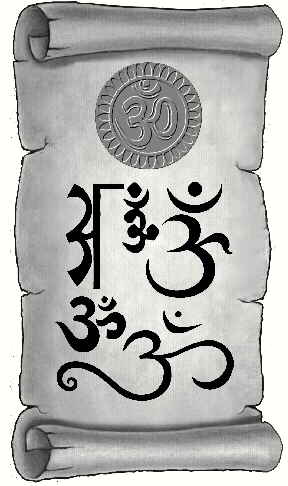
This identity of the macrocosm and the microcosm can be observed in the permanence of the relations formed as the substratum of all the aspects of the perceptible universe. Pillaiyar, as he is fondly called by the Saivites, is represented as elephant-headed to express the unity of the small being, the microcosm that is man, and the great being, the macrocosm. The word Gaja, meaning elephant, is taken to mean “the origin and the goal.” The stage reached by the reintegrated being, the yogi, in his experience of ultimate identification (samadhi) is called Ga, the goal; and the principle called Ja, the origin, is that from which the syllable AUM is said to be issued through a process of multifold reflection.
The man-part of Ganapati, representing the manifest principle, is subordinate to the unmanifest, shown as the elephant, which is the head. In symbols depicting Divinity, opposites can coexist. Hence man and elephant are combined in Ganapati’s symbol, which leads to its essential meaning of Pranava. The elephant is also a symbol of the stage whence existence begins (Brahma Sutra 1.1.4) and whence the syllable Aum issues. From Aum issues the Veda, the universal law, and from the Veda, the universe. Prana is the life current, and Va is the energy of Siva named Chit Shakti. When they mingle in the vibration of Prana Va, Ganesha reveals Himself. Aum Tat Sat Aum is His sacred message. The living beings are the visible form of That, the Supreme Reality. Human existence denotes the coordination of the Absolute and the relative, of That and Thou.
That (Tat) represents the limitless, transcendent
principle whose (nature) is Truth and Knowledge.”
Taittiriya Aranyaka 8.1.1
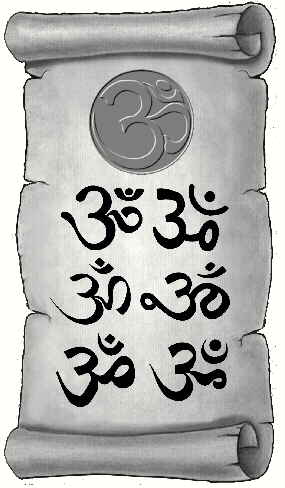
True knowledge is the realization of this unity which Ganesha signifies. Aum is commonly attributed to the form of Ganesha, the Lord of the Pranava Mantra, even though the three letters A-U-M signify a number of God’s names when taken separately. A stands for Virat, Agni, and Vishva. U stands for Hiranyagarbha, Vayu and Taijasa. M represents Ishvara, Aditya and Prajna.
Virat is the all-comprehensive universe of being. Agni is the primary element of all sacrificial ceremonies. Vishva means God Siva, since the whole universe and the objects in the universe are manifested and are sheltered in Him. He pervades all of them. Hiranyagarbha is One who is the source and support of all light and luminous bodies as the sun, moon and stars. Vayu means one who is the life and support of the universe, the cause of its dissolution. Taijasa is one who is resplendent and gives light to the sun and other luminous bodies. Ishvara is one whose knowledge and power are infinite. Aditya means immortal. Prajna denotes one whose knowledge is perfect and one who is omniscient.
Thus, the sacred syllable Aum combines within itself some of the most sublime names of the Supreme Being, and connotes His omnipotent and omniscient nature and attributes. Aum thus represents, in its fullest connotation, God Siva, the Supreme Being.
Aksharam Brahma Paramam
Svabhavo Adhyatmam uchyate.
Bhagavad Gita 8.3
Brahman is spoken of as Akshara: that which is imperishable and inexhaustible. Saint Auvaiyar also referred to Akshara, meaning eternal wisdom, in her famous poem on Vinayaka. Krishna tells Arjuna in the following verse that he who leaves the body reflecting on Aum reaches the goal of beatific bliss, paramam gatira.
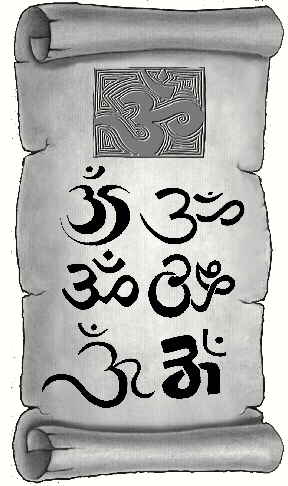
Aum Ityekaksharam Brahma
Vyaharan mam anusmaran
Yah prayati tyajan deham
Sa yati paramam gatim.
Bhagavad Gita 8.13
Aum is the Ekakshara, the one-syllable mantra of the Para Sivato, the word not spoken. Mantra is that which redeems when contemplated upon:
Mananat thrayate iti mantra.
(The Son of Siva, Ganesha, being) “a second myself,” came to be recognized as the God Word Aum.
When we chant the Pranava Aum — the harmonious combination of the three basic sounds, akara, ukara and makara — the microcosmic activity links with the entire macrocosmic activity of the cosmos, which represents the all-pervading Reality of Parashiva.
Akara sound is produced from the base of the spinal cord, where the kundalini is posited, and rises to the throat. The supreme consciousness (chaitanya), functioning through the gross body in the waking state in the individual, is called vaishvanara and is represented by the first syllable, A. Ukara is the second stage, where the sound from the throat is rolled outwards to the tip of the tongue. The same supreme consciousness, functioning through the subtle body in the dream state in the individual, is called taijasa, and is represented by the second syllable, U. This makara sound is concentrated at the lips. This same supreme consciousness, functioning through the causal body in the deep sleep state in the individual, is called prajna, and is represented by the final syllable, M, in AUM.
The significance of the Aum mantra is also brought out lucidly in the sikshavalli of the Taittiriya Upanishad:
Aum iti Brahma, Aum iti idam sarvam
Aum ity etad anukriti, Aum iti samani gayanti (1.8).
And in the Chhandogya Upanishad:
Aum ityetadaksharam Udgitham upasita
Aum iti Hyudgayati tasyopa Vyakhyanam (2.23.3).
The image of Ganapati and His mantra Aum constantly remind us of the reality of the great identity. Man truly is the image of the cosmos. All realization lies within himself. Through the study of his inner impulses and of his inner structure, he can understand the nature of the universe. Lord Vighneshvara assures the freedom from fear. He instills the knowledge necessary to remove the fear inherent in time and duration. What power lies hidden in the mystic Aum, the sound symbol of Ganapati, and which is uttered at the beginning of every rite! Its meaning is expressed in Aum Tat Sat and represents the fundamental identity of the macrocosm and the microcosm.
The swastika forms the graphic symbol of Ganapati. It is represented by a cross, being the development of the multiple from the basic unity, the central point; but each of its branches is bent so that it does not aim at the center. This is intended to show that man cannot reach the basic unity directly through the outward forms of the universe.
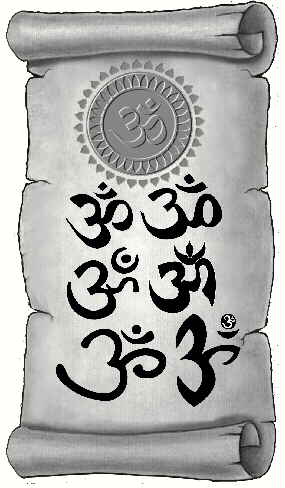
Ganesha’s trunk is bent because Divinity cannot be directly understood and also because He is master of obstacles. The noose in His hand destroys moha, delusion, the enemy of all seekers. The driving hook is the insignia of the ruler of the universe. The hand granting boons fulfills all desires, and the other hand allays all fears. Man seeks Ganesha’s protection at every turn in order that the Great Being may establish Itself in his midst, and he may become one with It.
That Transcendental One is Aum Ganesha. That Immanent One is Aum Ganesha. The living beings are Ganesha Aum. Thus do we raise the chant of concord, Aum Ganesha Tat Sat Aum. It is through the worship of Lord Ganesha that we come to know the venerable Lord Murugan, and lastly Supreme God Siva, their Creator, our Father-Mother God, Lord of all creation, preservation and dissolution. Aum Tat Sat Aum.
Aum is the one Eternal Syllable of which
all that exists is but the development.
The past, present and the future are
all included in this one sound,
and all that exists beyond the forms of time
is also implied in the word Aum.
Mandukya Upanishad
On the following pages we have assembled a special collection of Aum calligraphy gathered at our Kauai monastery over the past few years. They are mostly drawn in Devanagari, but also in some of India’s regional languages. Of all the sacred symbols from India’s rich spiritual heritage, none is more widely used and loved than the Aum. It is Divinity incarnate, and so it is natural that calligraphers and artists, designers and wall painters use it again and again to express the highest Truth.
From many hundreds of styles, our editors chose a few dozen and scanned them into Adobe’s Illustrator program. There they fine-tuned them, removing some of the rough edges occasioned by printing in Bharat, then added a few embellishments where needed. The scrolls themselves were produced in Adobe’s Photoshop program, which was also the tool used to create the embossed effects.
We take great joy in trading Aums (and other Indian art forms, like Ganeshas, village logos and more) and will release rights to anyone who shares their Aum collection with us. Send us a few specimens you especially like, and we will send you a few back. Send fifty or more, and receive a treasure from our years of collecting, a free US$49 CD with more than 700 styles. You can also view our Aum collection and download low-resolution images at (www.himalayanacademy.com/art/). Mail your contributions (photocopies are fine) to Acharya Palaniswami, Himalayan Academy, 107 Kaholalele Road, Kapaa, Hawaii, 96746-9304, USA.
**Credits to and published by Himalayan Academy

